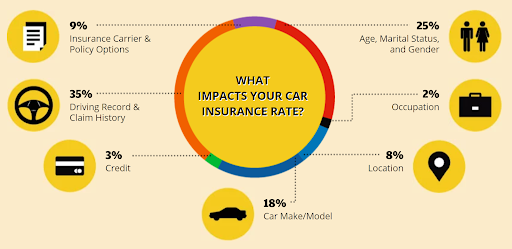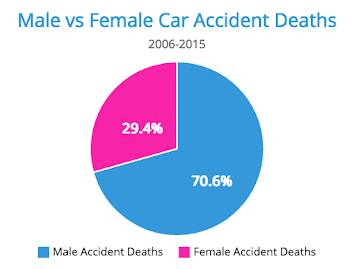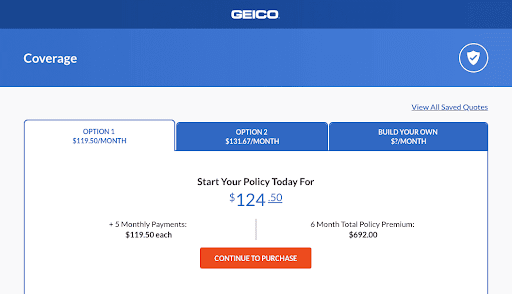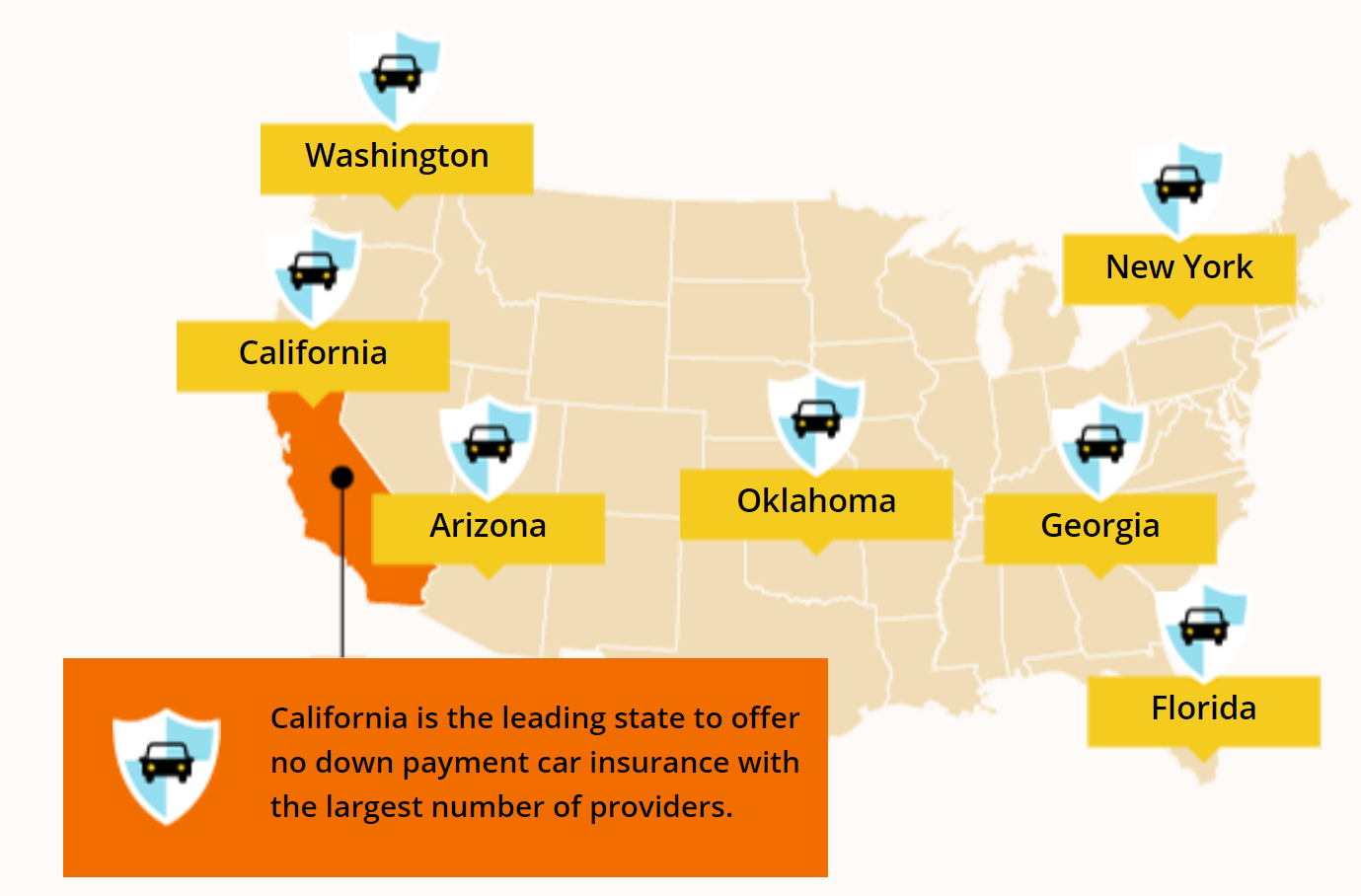The Truth About Very Cheap Car Insurance No Deposit
Is it possible to find very cheap car insurance no deposit? If you’re shopping for new auto insurance, you can find insurers that offer reasonable auto insurance deals without making a deposit. Is it advisable? How to get it, and what tips to follow?
FREE Auto Insurance Comparison
Secured with SHA-256
Encryption
If you’re shopping for new auto insurance, a few very cheap car insurance no deposit options are available. It’s possible to pay the rate in full, getting a better price for paying in advance or choose to pay monthly, which is an attractive option for many drivers with modest finances. But deciding your payment to be made every month, doesn’t mean that you will still have to give a certain amount upfront to the insurance company as a guarantee.
You can still find insurers that offer reasonable auto insurance deals without making a deposit.
Some Things We Should Consider About Auto Insurance
- Almost all states request drivers to possess at least liability insurance to sit behind the wheel legally. The vast majority of drivers see coverage as a way to be protected. Some of them, though, just want to abide by the law. These drivers shop for the lowest rates.
- The insurance policy is based on a rate, named a premium. The insured driver must pay the premium. It’s nothing more than the total amount that the insured driver must pay for the policy. Also, the deductible is the amount that the insured driver has to pay in the case of an accident.
- Many insurers let you make your premium payments in installments, usually monthly ones.
- Most insurance companies will request a deposit from the insured driver. The reason is that they don’t want insured drivers to be covered in the case of an accident, without paying.
Article Guide
☰
How to Obtain the Most Economical Insurance Premium?
First of all, we are going to take a look at some hints you should consider when shopping for low-cost auto insurance:
- DRIVE SAFE: It’s obvious, a clean driving record can maintain your car insurance cheap.
- DRIVE LESS: It’s not always possible to lower the miles you drive, but fewer miles means a cheaper premium. Try carpooling or use public transportation when possible.
- USE YOUR DEDUCTIBLE: The deductible is the money you will spend in case of an accident. This can result in a strain, assuming that your finances aren’t substantial. But, if you want to be covered just to obey the law, increasing your deductible can reduce your premium. On the downside, if you are involved in an accident, you will be forced to pay for most of your repairs.
- POSSIBLE DISCOUNTS: Extra discounts can be available for multi-car insurance. Firefighters, serving in the military, students, nurses, and others, can be eligible for better rates. Ask your insurance carrier what discounts do you qualify for. You never know.
- TALK TO YOUR EMPLOYER: By insuring many cars through your employer, you’ll have bulk auto insurance deductions from an approved insurance company.
- AGREE TO AUTOMATED PAYMENTS: Paying your premium in installments will probably cost you more than a yearly premium paid upfront. In this case, asking your insurer to arrange for programmed payments every month can help bring your premium down.
- TAKE ADVANTAGE OF THE INCLUDED AT NO EXTRA COST SERVICES: Some companies add extra services in their insurance policies. Some examples are locksmith services, transportation expenses in the case of an accident, and covering for pet injuries. Some companies supply a device to use in the car to track your driving habits and likely lower the premium. Other companies offer applications that you can download to your cell phone for the same purpose. Ask and use these giveaways if there’s nothing else you can do to lower the cost of your No upfront payment car insurance.
Be aware of the factors that insurers consider when they rate you.
Insurance premiums estimation begins with a rate that covers aspects that are common to a broad spectrum of drivers. After that, insurers look more in-depth at individual risk factors that increase the possibilities of you making a claim. The predominant rating factors are:

01. Driving Record, Driving Experience, and Claims History
These three factors account for 35% of your Insurance Premium.
[amcharts id=”xy-1″]
Driving record
Among the most important risk factors to an insurer is how safe do you drive. Your manners behind the wheel affect your risk of getting into an accident. That’s why auto insurance companies, first of all, take a look at your driving record. Drivers with a good record, qualify for lower prices, and are also eligible for better discounts.
Driving records reflect if a driver has been involved in accidents or has tickets. Collisions and moving violations such as a DUI, speeding tickets, and others on the driver’s record mean a riskier driver for auto insurers, the result is higher prices.
Even a minor moving violation, resulting in a ticket, can sometimes increase your insurance rates up to 40 percent. With some insurers, though, a first ticket will not increase your rates, but any ticket on your driving record will imply losing your discount for being a good driver, which is estimated to be as high as 30 percent. Major moving violations like a DUI can double your rate or more as a result of a mix of lost discounts and higher rates. Some car insurance companies refuse to insure drivers with multiple accidents or moving violations. If this is the case, you will still be able to find insurance, though most probably with a nonstandard insurance company, and at a very high cost until your record is clean.
Typically, a moving violation will impact your car insurance rate. Parking tickets, however, are not considered moving violations because you were not operating your car. This is the reason why parking tickets won’t impact your car insurance rates.
Driving experience
Insurance companies know it: inexperienced drivers are a bigger risk. Experience is a major factor, whether you are 16 or 50 years old. Drivers with little or no practice are a higher risk for car insurance companies.
Teenagers are the largest class of drivers with low experience, and they also pay more because of their age and inexperience, these two factors can double the danger. A middle-aged person who is a new driver will usually get a lower rate because he tends to be more calmed and moderate than a teenager.
The more years of experience, the better. The combination of having a license for a long time and having a good driving record is even better for your pocket. That combination will assure you lower rates, on top of the good driving record discounts.
Claims History
Insurance companies not only examine your driving record and experience, but they also review information about your claims history. Your claims record includes previous claims you’ve made, not only to them but also to other auto insurance companies. Not-at-fault accidents and comprehensive claims won’t cause a rise in your rate, while at-fault collisions will most probably lead to a surcharge. They will also analyze how much you’ve received for your demands, as claims under $1,500, may not result in a higher rate.
Another important consideration when analyzing your claims history is the number of claims. Three or more claims in a three years term will make car insurance companies see you as a risky person to insure. Consequently, they will either raise your rates or choose not to extend your policy.
2. Age, marital status, and gender
These are the second most important factor. One fourth or 25% of your Insurance Premium is based on these three components.
Age
The slogan of car insurance companies could be: “The less experienced the driver, the higher the cost of auto insurance”. Statistics show that young drivers are the riskiest category of drivers to insure. They are more reckless behind the wheel and are involved in more accidents than older ones. They are also more distracted drivers. Rates decrease as you age with several insurers, but usually, after you turn 25, you’ll pay as much as 20% less.
A study carried out by the IIHS, states that drivers between 30 to 69 years of age are a lot less probably to have car accidents. If their driving record is clean, car insurance rates generally don’t vary for drivers from their thirties until they become seniors.
Immature and senior drivers, generally offer higher risks, and, as a result, insurers impose higher prices to insure them. The slower reflexes of senior drivers, lead to higher accident rates at that age. The possibilities of being hurt or killed in a collision get bigger with age, according to The U.S. Center for Disease Control.
Three states in the USA don’t let insurance companies base their rate on age: Massachusetts, California, and Hawaii. However, in California, insurance companies are allowed to look at the driving experience, suggesting that those drivers with less experience could pay more.
Below, three bar charts that clearly show the relationship between the age of drivers and the number of crashes. The results show the number of crashes per 100 million miles driven compared to the driver’s age.

Marital status
Studies show that married drivers are a lower risk to insurance companies than single ones; this includes divorced and widowed drivers. Married drivers are less active and drive safer. The result is fewer accidents and, consequently, fewer claims. The NIH sustained in a study that the number of collisions with single drivers involved was twice as much as the ones with married drivers.
Overall coverage prices can be up to 15 percent cheaper for married people due to their status. Matrimonies can also have additional deductions or multi-car discounts by combining their auto insurance policies, and even a multi-policy lower rate for bundling home and car insurance policies with the same insurer.
Of all fifty states, Massachusetts is the only one that doesn’t allow car insurance companies to consider marital status as a factor for rating.
Gender
Accident statistics are not the same for men and women. This is why most states authorize insurers to look at the driver’s gender when calculating the premium. Studies show that men are more expected to get involved in an accident, especially young drivers, who are noted to be bolder behind the wheel. Fatal accidents involving males are more than double compared to those with female drivers. The graphic below clearly shows the difference:

The IIHS indicates that male drivers usually use their cars more than female ones. Their driving performance is also more dangerous, including speeding, driving under the influence, and not wearing a seat belt, among others. The IIHS asserts that men mostly cause more severe crashes. Insurers know this and rate accordingly.
But men not always pay higher premiums than women. The disparity in mortality risk decreases with age. After their 30’s, in general, car insurance rates for men and women become more proportionate, and, depending on the driver’s personal information, sometimes men pay less than women. But again, as drivers mature and enter into their 60s, prices for males start to increase as studies show that older men collide more than women.
There are six states though that do not allow insurance rates to be affected by gender. These states are:
- Michigan
- Massachusetts
- North Carolina
- Montana
- Hawaii
- Pennsylvania
3. Car Type, Make, Model and Use
These components of your insurance rate are also important. Around 20% of your insurance premium is based on these factors.
Vehicle type
Your rates also depend on the kind of car you’re insuring. If studies and insurer’s data say that drivers with your type of car have filed more claims or been involved in more accidents, then your rates will certainly go up.
Vehicle make and model
The price of the car, the theft rate, the cost of the parts and repairs, the accident rate and the safety tests are all important factors that are taking into consideration by the insurance companies before they are ready to send you a quote. Based on these elements, different models from the same make, have different insurance rates.
Extra safety features in your car, like collision-warning devices and cameras, can be a double-edged sword. They undoubtedly add to the car’s safety, but on the other hand, they may add to the insurance rate, if repairing or replacing the item is expensive. That’s why just because a car does well on safety tests doesn’t mean it will be cheap to insure. For many insurers, some extra safety features in your vehicle are not enough to give you a substantial discount.
Use of the car
Insurance companies also want to find out what’s the personal use of your auto. A vehicle that you drive to go to work is more at risk than a car that you use only on weekends due to the increased mileage and time of the day when you drive the vehicle. Usually, people who use the vehicle to commute, drive more miles and drive during rush hours. Traffic is always worse on weekdays and rush hours, therefore, using your car to go to work and back from Monday to Friday will add mileage, driving time, and will also increase the risk of an accident resulting in higher insurance rates.
Personal use of a car is less expensive since the risk of having an accident is lower. If the use of your vehicle is for business, you’ll have to find out if your auto policy still covers this type of use.
If the use of your car is for ridesharing, buy a policy specifically for this type of insurance. In both cases, the risk the insurance company is taking on is higher. Have this in mind.
Mileage
The more you drive, the higher the risk of having a collision. The insurance company will always try to know how much you drive. Your insurance company can also try to find out where you drive. From the distance of your commute, they will try to detect if you drive into a crowded part of the city from your home. For example, if you live in the suburbs of a big city and you drive 30 miles to work, the insurance company will assume that you drive into the metropolitan area. In this case, even if the area where you live is not a high risk one, they will raise your rate because your commute puts you at a bigger risk every weekday.
Check the miles you drive. If you see you’re driving fewer miles, tell your insurer and ask to adjust your premium.
4. Insurance carrier and policy options
These are other factors that account for around 9% of the amount you’ll have to pay for your car insurance.
Past insurance coverage
Studies have found that drivers with continuous car insurance history are more responsible. Insurance companies know this and, if this is your case, you’ll be able to get a better rate. The insurance company would take a look at your previous car insurance regardless if it were your current insurer or another one. However, keeping your insurance policy with the same insurer for a few years will help you have a loyalty deduction too.
If you are a young driver applying individually for the first time and you’ve been on your parent’s policy before, let the insurer know, and it won’t show that you were previously uninsured. This is important because having a gap in coverage can result in higher auto insurance premiums. On top of that, not having prior coverage can lead to penalties by some states.
Another scenario may be that you are not going to drive your car for a longer period. An example could be when you’re planning to sell your car or to live in another country for a while. In this situation, you can request a non-owners auto policy, which is usually not expensive. For a stored car, it’s advisable to keep the auto policy active. In this case, you can ask just for comprehensive insurance if there’s no lienholder.
Car insurance deductibles and coverages
The more things you have covered, and the higher the limits, the higher your premium. By covering more aspects, the risks of your insurer increase, and in the case of an accident, the expenses will skyrocket.
It is very advisable, first of all, to check the mandatory requirements for car insurance in your state. Later, having in mind your financial situation, compare quotes of policies with minimum and more types of coverages. You will analyze if, in your case, extra coverage makes sense.
The four essential components of a car insurance policy are:
- Liability
- Comprehensive and collision
- Underinsured or uninsured driver
- Protection for personal injury or medical payment
Depending on what your goal is, as you look into different rate options, choosing the lowest price is not always the best route to take. It’s not just the price, but what insurer are you choosing.
Not all insurance companies are good. Insurance companies with terrible customer service or an inadequate response after a collision happens, are still there on the market. So, you could find yourself negotiating with the wrong one. The rate you get also depends on the company you will choose.
It’s advisable to shop for car insurance at least twice in 6 months. The more companies you check out, the better; however, it is always good to know that you usually get what you pay for.
Depending on what you are looking for, to select the right insurer for your needs, you must look beyond good premiums. You can avoid bad companies by doing some studies to find out about their strengths, compare their rates, and the factors they review to determine your rate.
5. Location
Eight percent of your premium depends on where you live. Do you know why insurance companies ask for your ZIP code before they give you an estimate? That’s because your address is at the base of most rates. Therefore, the calculation of your base rate will start with your home address.
If your home is in a crowded and congested urban area, then accidents and claims are, presumably, going to be more common. Driving in an overcrowded part of a city will make the probabilities of an accident to soar and accordingly, your rates will go up too. On the other hand, if your address is in a country area, where having a collision due to these circumstances is less probable, your rates will be much lower.
From your address, auto insurers will know other things, that, in the end, will impact your premium. Some of them are the number of robbed cars in your area, the rate of vandalism, the number of claims and frauds, and also, harmful weather. Your insurance company will take all of these into account before your rate is completed.
6. Credit history
Around 3% of your rate is based on your credit history. Studies show that drivers with worse credit scores (600 or less) are more prone to file claims, either inflated or fake ones. If your credit score is low, you could expect a rise in your premium from your insurance company. Some states, though, don’t admit credit history to be used as a factor.
Your score may also affect the way an insurer approves your payment to be.
If your credit score is low, many insurance companies will ask you to pay the whole or at least an essential part of the policy upfront, since records show that this type of customer is more expected to fail a payment.
Customers with even lower or very bad credit scores are often asked to pay the entire premium upfront as a requirement for having the policy.
States like California and Massachusetts prohibit insurance companies from using credit history as a factor.
Summarizing:
You need to know the risk factors that you can and the ones that you cannot control.
- Some factors like your age and years of experience are out of your control, but some aspects you can control.
- Keeping a clean driving record and having a good credit score mostly depend on you.
- Buy a car according to your income.
- Choose the right coverage for your needs.
- Each insurance company is different, and all of them estimate your risks differently.
- Your rating factors won’t always be perfect, but that doesn’t mean you can’t get better rates.
- You are not compelled to stay with the same insurance company forever, so make sure you shop around at least twice a year.
- Find the insurer whose price is the most competitive for your particular combination of factors.
- Strive to pose less of a risk with the rating factors that are under your control, and in turn, you will enjoy the lowest possible premiums.
Can You Have Instant Auto Insurance Without a Deposit?
Instant Car Insurance With No Deposit is not a particular product suggested by insurers. When you buy car insurance, you can divide the premium in your policy evenly, in monthly payments. For most people, the initial deposit will be higher than the following ones. The first payment represents the down payment.
The higher the amount you pay for the initial payment works as a deposit. This deposit animates you to go on with the same insurer through the extension of the policy. Essentially, people with good driving records and credit scores, qualify more easily for no or a small deposit auto insurance.
Below, we describe three ways to understand how Very Cheap Car Insurance No Deposit works:
1. No Deposit Doesn’t Mean it’s Free
Since Auto Insurance With No Deposit is not a commonly used term by renowned insurers, the name is more frequently used by discreditable companies in inaccurate or ambiguous ways. One possible wrong conclusion is that you can have insurance before paying at least some money to your insurance company. Many drivers think this is what cheap no deposit car insurance is about.
However, this is not true. Car insurers won’t cover you or your car if you don’t pay for it because, once your policy is effective, that means that you can submit a claim. If you make a claim, your insurer may be forced to pay before receiving any money from you. If an insurer suggests insuring your first month without charge, especially if you haven’t made a deposit, you should be cautious of buying a policy from this company, as this is very unusual to happen.
2. You Don’t Need to Make a Deposit to Get a Quote.
You can always get an auto insurance quote from an insurer without making a deposit. No big car insurance company will ask you for an upfront payment or charge you to send you a quote. If a company tells you it’s a common practice to charge for a quote, this should be a warning signal about that insurer’s reputation. Auto insurance is different from other activities were charging a fee or a deposit for a quote is a regular practice.
3. A Down Payment Could Be Your First Month’s Installment
This is the right way to explain it. The fee for the first month can be taken as the down payment, giving the appearance that there is no money down. An insurer that renounces to take a deposit reduces your initial expenses.
A car insurance company may offer a no deposit insurance by turning it down and assign it as your initial payment. This looks ideal. However, since the demand for this type of insurance is very high, your insurer may use this as an excuse to raise your premium.
Let’s look at an example: your insurance company may charge you $400 for your premium if you pay it in full upfront, or they may suggest the second option of no deposit at $45 per month. With the second offer, you will end up paying $540 per year, i.e., $140 more than the total rate if you pay it beforehand. Yet for those on a budget paying a higher premium may still be better.
Finally, if you accept to have a no down payment auto insurance, you will omit the deposit obligation. Nevertheless, in this case, consider that you will still have to disburse a regulatory fee to start the policy. You will also be responsible for paying all installments.
Is it Recommended to Receive Auto Insurance with a Low Deposit?
The main advantages of making a down payment are:
- Your monthly payments will be lower, as the deposit will cover part of the premium
- The insurance company will see you as a trusted customer, as you will have shown responsibility
There’s not an established sum or percentage of the premium for your down payment. Usually, the rates for the deposit and the premium are lower for low-risk drivers. The factors considered by the insurance company to set your deposit are similar to those studied to determine your rates.
Your down payment depends on several factors. Your address, age, and type of car, as well as your credit and driving records, are important aspects, especially the last two because they are the less difficult to control. The insurance companies will always request a higher deposit from a driver who has been involved in collisions, has a low driving and credit record, or is new behind the wheel.
Your deposit may be a small amount or an essential portion of the total you will have to pay, depending on the policies of your insurance company. A usual deposit could correspond to two months of a monthly premium. These deposits often range from 20 to 33% of the premium for a six-month coverage, depending on the insurer’s policies and the state. But if your driving record is good, you could pay a lower deposit on your first month than on the following months of coverage.
If you cannot pay your six-month rate upfront, you will choose to pay for your auto insurance in monthly installments, but you will be stuck between a rock and a hard place if your insurance company asks you to come up with a 30 % deposit. In some states and with some providers, you’ll be able to cut out an upfront payment by acquiring a no down payment auto insurance.
The process to pay your auto insurance premium in installments is not different from the one used to apply for a quote. Once your driving history and your car information are submitted you’ll get a quote and will receive this information:
- Cost of your down payment
- Cost of your monthly payments
- Total price if you pay in full
Here you can see Geico Insurance Company quote page displaying the payment options for an auto insurance policy:

In the example, after an initial deposit of $124.50, the monthly payment is set to $119.50, meaning that the deposit is very low, only $5.00. If you pay your premium in full, Geico offers a discount. Your premium is $722.00 in monthly installments, but you’ll get a $30.00 discount if you pay upfront in full.
Typically you can buy your auto insurance right away after receiving the quote, despite the size of the down payment.
How to Take Affordable Auto Insurance Without a Deposit?
You can always find a way to get cheap auto insurance without having to give a deposit. Counting on your driving record and address, different auto insurers may ask for different down payments. Here you’ll see some sample quotes from State Farm, Progressive, and Geico, which are among the best insurers. The common factor for a person with an exceptional driving record is a very low required deposit. Even more, Progressive asked for a lower payment for the initial month than the following ones:
| Deposit/first-month premium | Monthly premium | Total 6-month premium | Percentage of the first-month cost compared to a typical month | |
| GEICO | $62.30 | $61.30 | $368.80 | 102% |
| Progressive | $29.28 | $74.15 | $400.03 | 39% |
| State Farm | $99.32 | $99.32 | $595.92 | 100% |
Two of these insurance companies, Geico and Progressive, gave our sample driver a small discount for paying the entire premium upfront. Still, State Farm kept the same amount for the premium regardless of advanced payment in full or in installments.
Shopping for cheap auto insurance without a deposit getting quotes from many insurance companies is the best way to find one. Some insurance companies will require deposits either smaller or larger, but you will find that some of them don’t.
Where Is It Possible to Find Very Cheap Car Insurance No Deposit?
It’s true, No Deposit Auto Insurance is not the most common type of insurance, and you won’t find it anywhere, but that doesn’t mean that there aren’t many companies that offer this type of coverage even nationwide. You can also buy this type of insurance online, either directly with the insurer or through the website of a third party.

There’s no difference in how to get a good deal on No Upfront Cost Car Insurance and any other policy. Your no deposit quote will be impacted by the same price components, such as liability, collision insurance, and motorist coverage for an uninsured or underinsured driver. In all 50 states, the mandatory coverage is liability insurance. Your base premium will be further increased if you include other coverage benefits and add-ons like insurance for collision and others.
FREE Auto Insurance Comparison
No matter how much car insurance you need, compare quotes direct from auto insurance providers nationwide
Secured with SHA-256 Encryption




